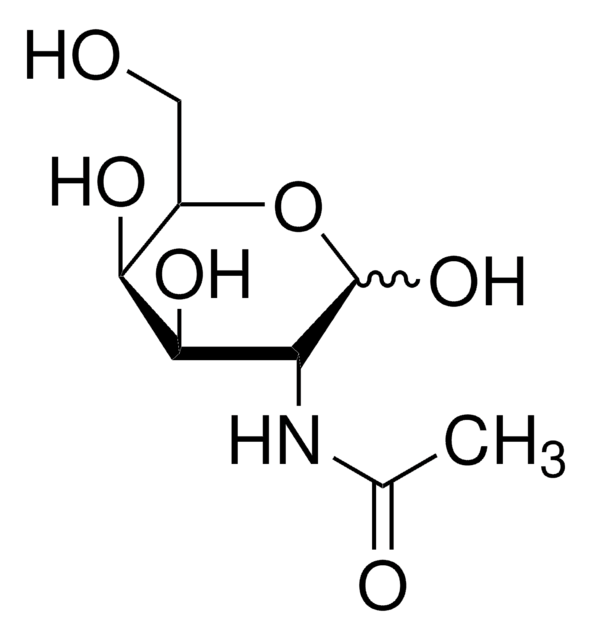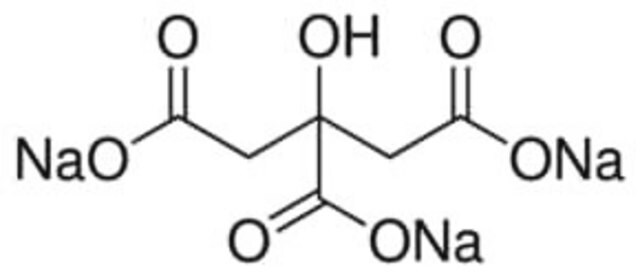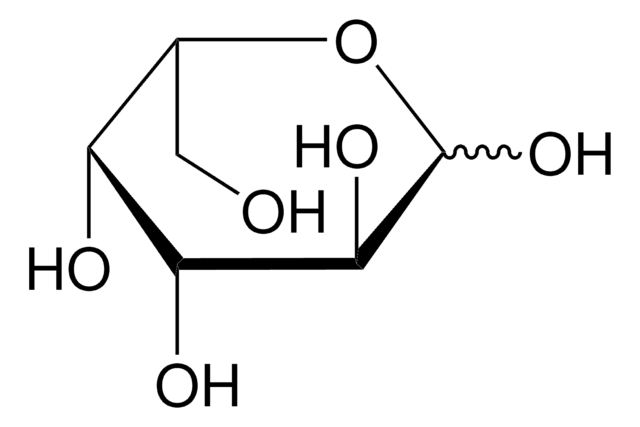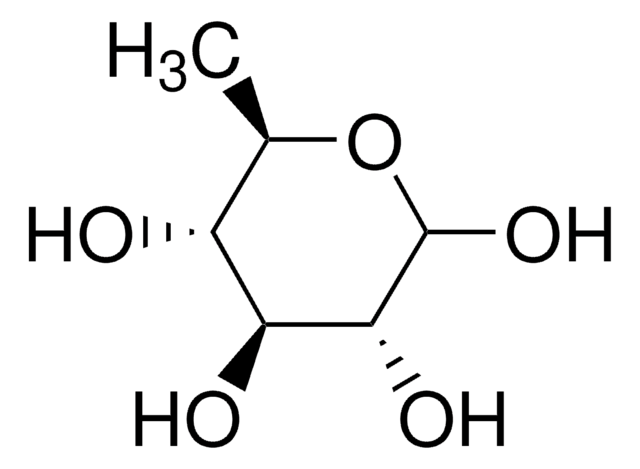F2252
L-(−)-fucose
≥98% (GC)
Synonyme(s) :
6-Désoxy-L-galactose
About This Item
Produits recommandés
Niveau de qualité
Pureté
≥98% (GC)
Forme
powder
Technique(s)
gas chromatography (GC): suitable
Couleur
white
Pf
150-153 °C (lit.)
Solubilité
H2O: soluble 50 mg/mL, clear to very slightly hazy
Chaîne SMILES
C[C@H](O)[C@@H](O)[C@@H](O)[C@H](O)C=O
InChI
1S/C6H12O5/c1-3(8)5(10)6(11)4(9)2-7/h2-6,8-11H,1H3/t3-,4+,5+,6-/m0/s1
Clé InChI
PNNNRSAQSRJVSB-KCDKBNATSA-N
Vous recherchez des produits similaires ? Visite Guide de comparaison des produits
Description générale
Application
- comme sucre non hapténique dans un essai de liaison avec des billes recouvertes de lectines pour étudier ses effets sur la liaison de lectines immobilisées comme l'agglutinine d'arachide (PNA) et l'agglutinine de Dolichos biflorus (DBA).
- comme étalon interne pour diluer des hydrolysats enzymatiques devant être étudiés par des méthodes d'analyse.
- dans la synthèse d'un thioglycoside fucosylé.
Actions biochimiques/physiologiques
Autres remarques
Code de la classe de stockage
11 - Combustible Solids
Classe de danger pour l'eau (WGK)
WGK 3
Point d'éclair (°F)
Not applicable
Point d'éclair (°C)
Not applicable
Équipement de protection individuelle
Eyeshields, Gloves, type N95 (US)
Certificats d'analyse (COA)
Recherchez un Certificats d'analyse (COA) en saisissant le numéro de lot du produit. Les numéros de lot figurent sur l'étiquette du produit après les mots "Lot" ou "Batch".
Déjà en possession de ce produit ?
Retrouvez la documentation relative aux produits que vous avez récemment achetés dans la Bibliothèque de documents.
Les clients ont également consulté
Notre équipe de scientifiques dispose d'une expérience dans tous les secteurs de la recherche, notamment en sciences de la vie, science des matériaux, synthèse chimique, chromatographie, analyse et dans de nombreux autres domaines..
Contacter notre Service technique










